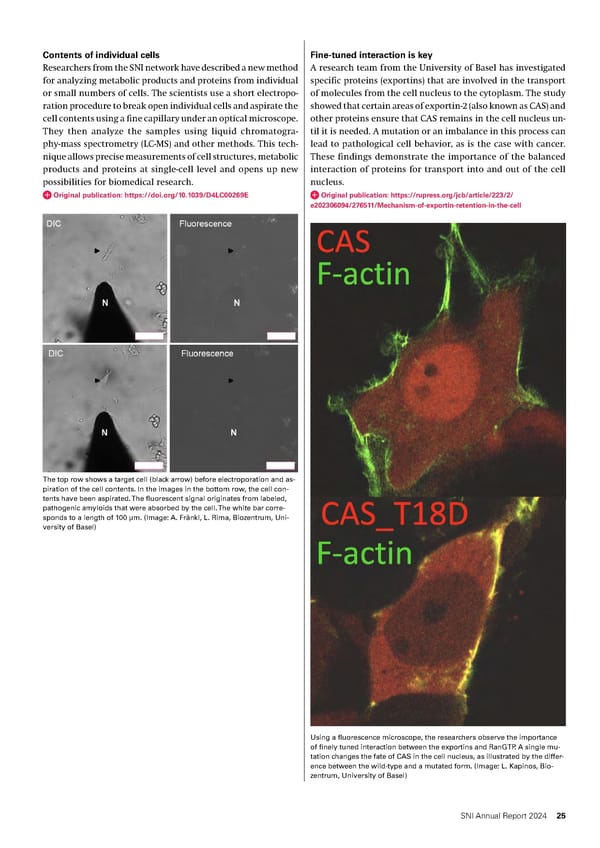Contents of individual cells Fine-tuned interaction is key Researchers from the SNI network have described a new method A research team from the University of Basel has investigated for analyzing metabolic products and proteins from individual specific proteins (exportins) that are involved in the transport or small numbers of cells. The scientists use a short electropo- of molecules from the cell nucleus to the cytoplasm. The study ration procedure to break open individual cells and aspirate the showed that certain areas of exportin-2 (also known as CAS) and cell contents using a fine capillary under an optical microscope. other proteins ensure that CAS remains in the cell nucleus un- They then analyze the samples using liquid chromatogra- til it is needed. A mutation or an imbalance in this process can phy-mass spectrometry (LC-MS) and other methods. This tech- lead to pathological cell behavior, as is the case with cancer. nique allows precise measurements of cell structures, metabolic These findings demonstrate the importance of the balanced products and proteins at single-cell level and opens up new interaction of proteins for transport into and out of the cell possibilities for biomedical research. nucleus. Original publication: https://doi.org/10.1039/D4LC00269E Original publication: https://rupress.org/jcb/article/223/2/ e202306094/276511/Mechanism-of-exportin-retention-in-the-cell The top row shows a target cell (black arrow) before electroporation and as- piration of the cell contents. In the images in the bottom row, the cell con- tents have been aspirated. The fluorescent signal originates from labeled, pathogenic amyloids that were absorbed by the cell. The white bar corre- sponds to a length of 100 μm. (Image: A. Fränkl, L. Rima, Biozentrum, Uni- versity of Basel) Using a fluorescence microscope, the researchers observe the importance of finely tuned interaction between the exportins and RanGTP. A single mu- tation changes the fate of CAS in the cell nucleus, as illustrated by the differ- ence between the wild-type and a mutated form. (Image: L. Kapinos, Bio- zentrum, University of Basel) SNI Annual Report 2024 25
 Annual Report 2024 - Swiss Nanoscience Institute Page 24 Page 26
Annual Report 2024 - Swiss Nanoscience Institute Page 24 Page 26